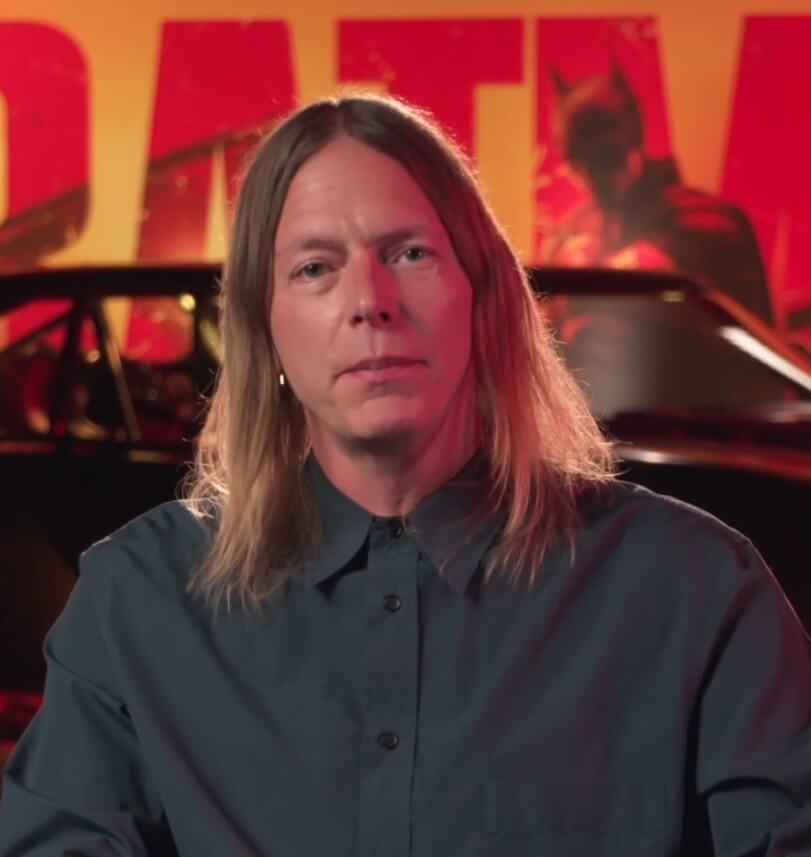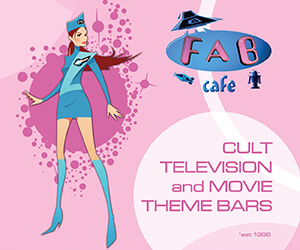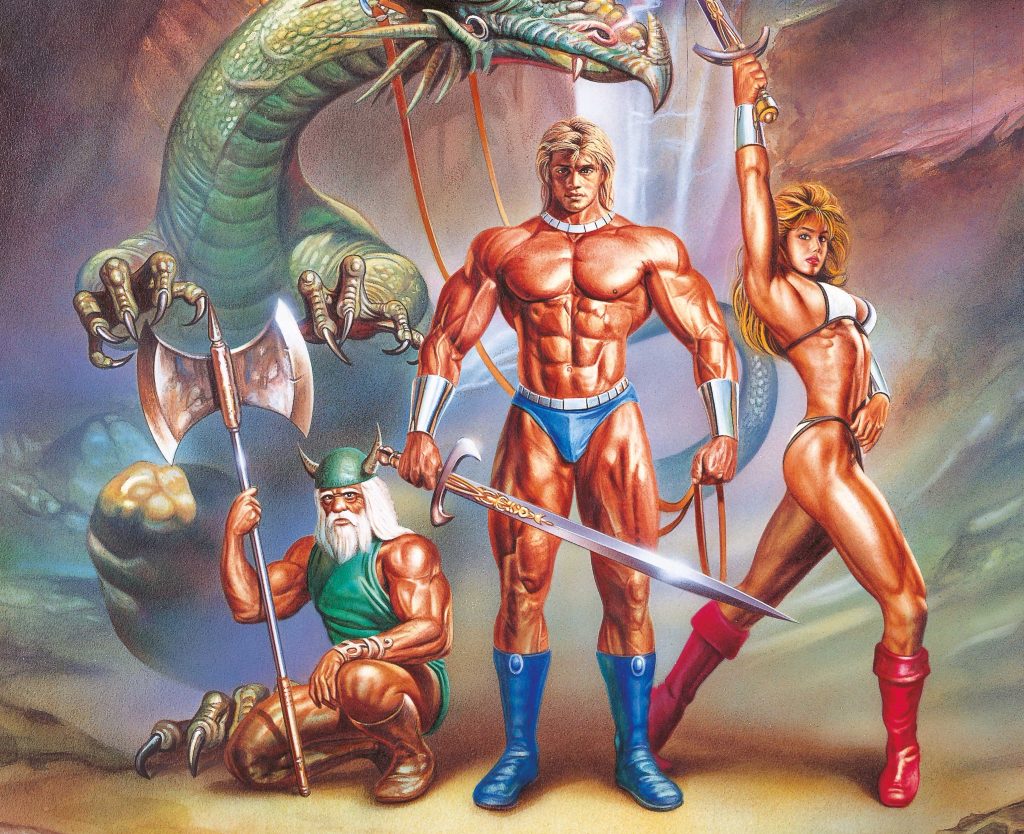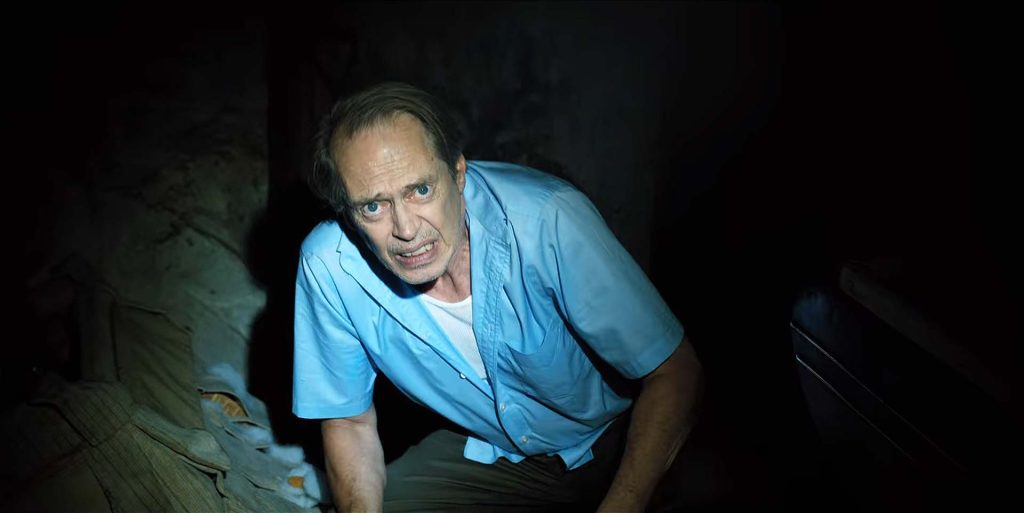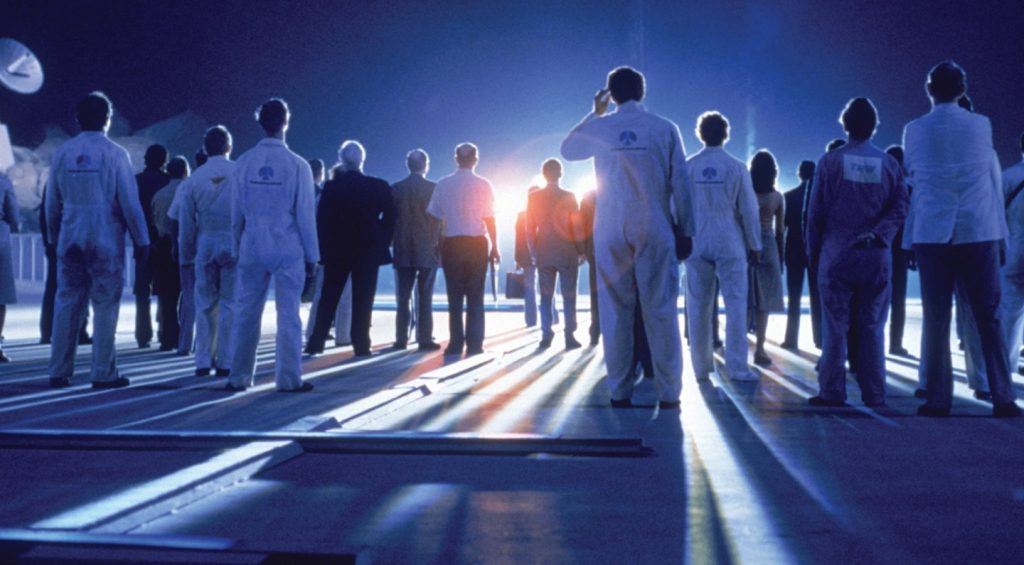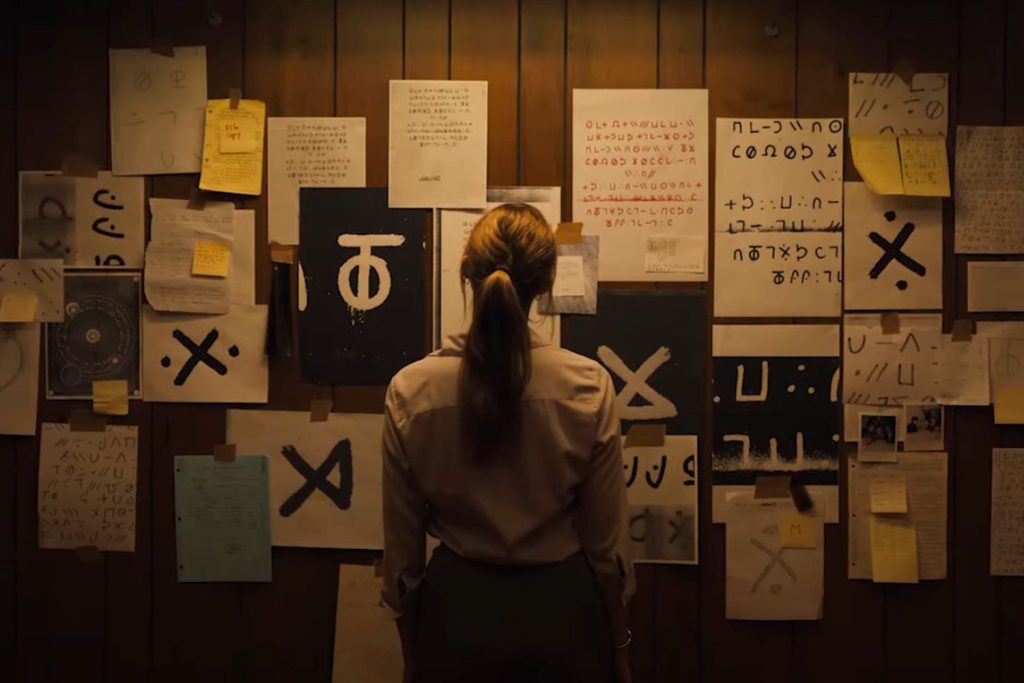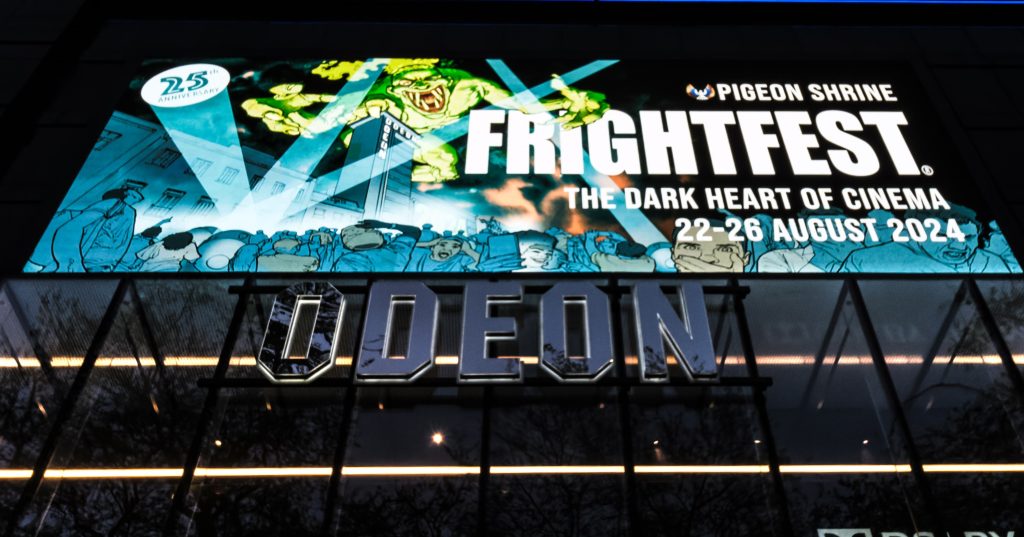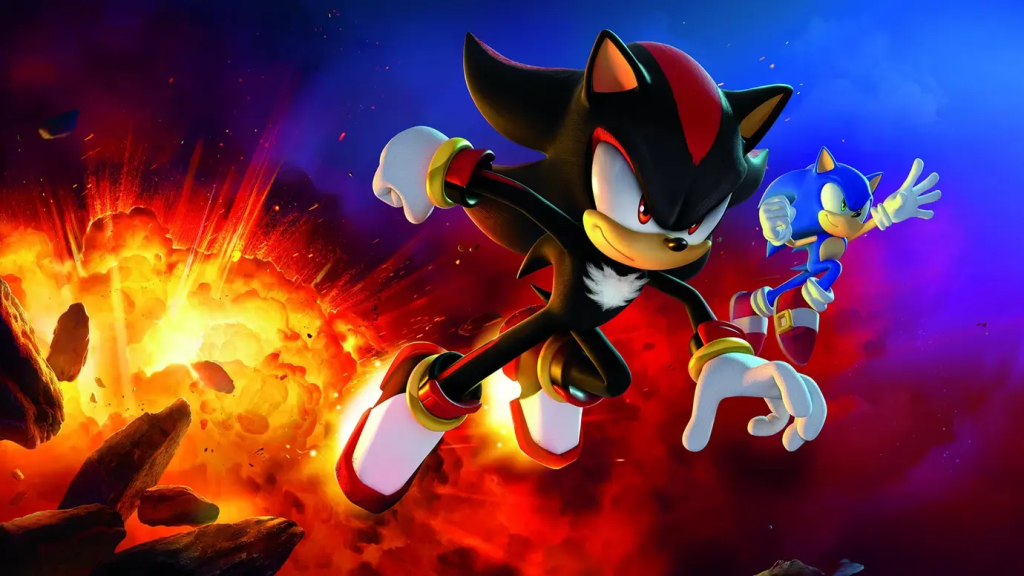After enjoying an acclaimed collaboration on DAWN OF THE PLANET OF THE APES and WAR FOR THE PLANET OF THE APES, production designer JAMES CHINLUND was once more paired with director MATT REEVES to create a Batman movie that serves comic book fans while simultaneously feeling relentlessly real. STARBURST talks in-depth with James to uncover how the tone, look, and feel of THE BATMAN came together, from Gothic ornament, StageCraft technology, right through to the iconic Batmobile itself…
STARBURST: What do you remember about first being told you’d be working on The Batman?
James Chinlund: When I first heard that I was going to be doing it, I was gripped with intense fear and anxiety. There had been so many amazing iterations of the film that had came before us, and so many iconic pieces of design. Matt and I were both just really trying to figure out “Where’s the space, where’s our space? How can we find new space, that’s simultaneously familiar for the fans, but also our own.” So, we got right down to it, and it’s a testament to Matt’s vision and leadership that he found this take on Bruce Wayne. That was the key for us to start cracking into the design in a new way.
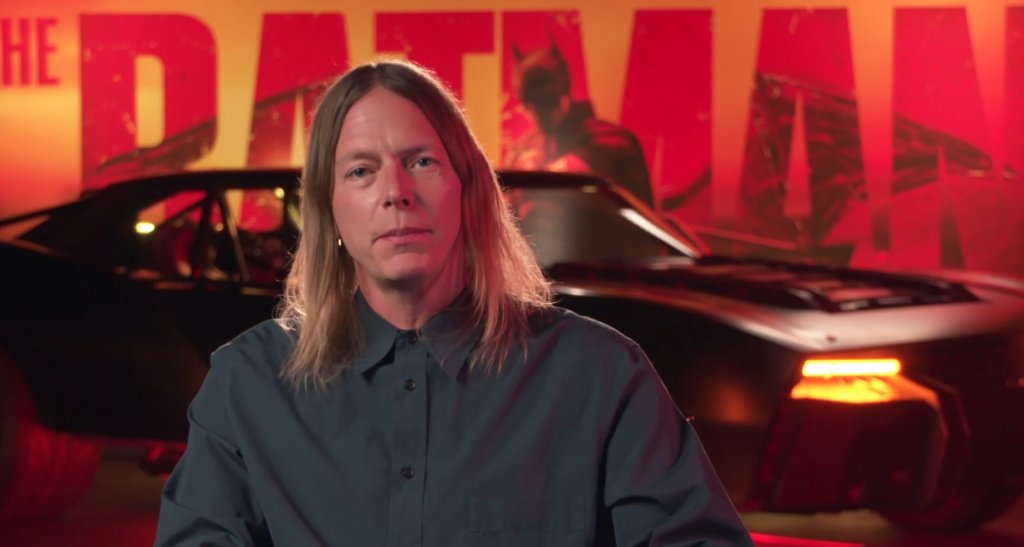
James Chinlund
You have obviously worked with Matt Reeves before, what is he like to collaborate with?
Matt and I had worked on two Planet of the Apes films prior to this, and we just had an amazing collaboration. On Dawn of the Planet of the Apes, I was actually hired by a different director who had left and so we were in limbo waiting, and then Matt came in and we were under pressure. He was writing while we were designing, we were on a short schedule and we needed to mount the world. We found ourselves to be very in sync, in terms of that take. It actually produced this amazing collaboration, that I had never had before, which was working with the director during the writing process, so we were talking about the ape civilisation, how they could build, what sort of spaces they could inhabit, and how those systems might weave their way into the script, and he would come to me with problems he had, like “I’m trying to get this character to move from this to this, and where could that be?”. It was just an amazing time of free-flowing communication and ideas that we carried forward into the next films. We did that on War for the Planet of the Apes, and we certainly did it on The Batman. So I mean he is just a master, and I think he is an incredible writer. It’s just a great gift to be able to work with someone like that.
There’s certainly the Gothic feel to the backdrop of the movie, but what other influences did you want to pour into the look and feel of the film?
We wanted the film to feel familiar to the fans. I grew up a Batman fan, that was my guy, absolutely. The Gothic take for us was trying to figure out a way to deliver that Gothic feeling without necessarily having everything be pure Gothic architecture. Which simply doesn’t exist in America, the cities in America are full of a variety of architecture that happens throughout time. So I think we were looking at different ways of expressing Gothic ornament, whether that’s through decay, or spindly shapes of antennas and things like that. Lots of different tools that we were developing to express those sort of spooky shapes. Without it necessarily feeling like you had stepped into a comic book world.
How did you and Matt go about making a Batman movie that felt so grounded and realistic?
I’d say that it starts with the script, and Matt’s take. He had a really smart take on Bruce, so seeing Bruce as this sort of DIY character, who wasn’t leaning into Wayne Industries for all of its bells and whistles. He was sort of down there in the garage doing it himself, saying “This is my mission, what do I need, I need a car! What is that car going to be, how can I build this car?” it was just him against the world. I think that really allowed us to expose his process, and the thoughts that he was having, as he was designing his character, and those are reflected in his car, in the Batcave, in the design of the costume, all of those things. I think that that was the initial part of the fabric that we started to knit the rest of the world together with.
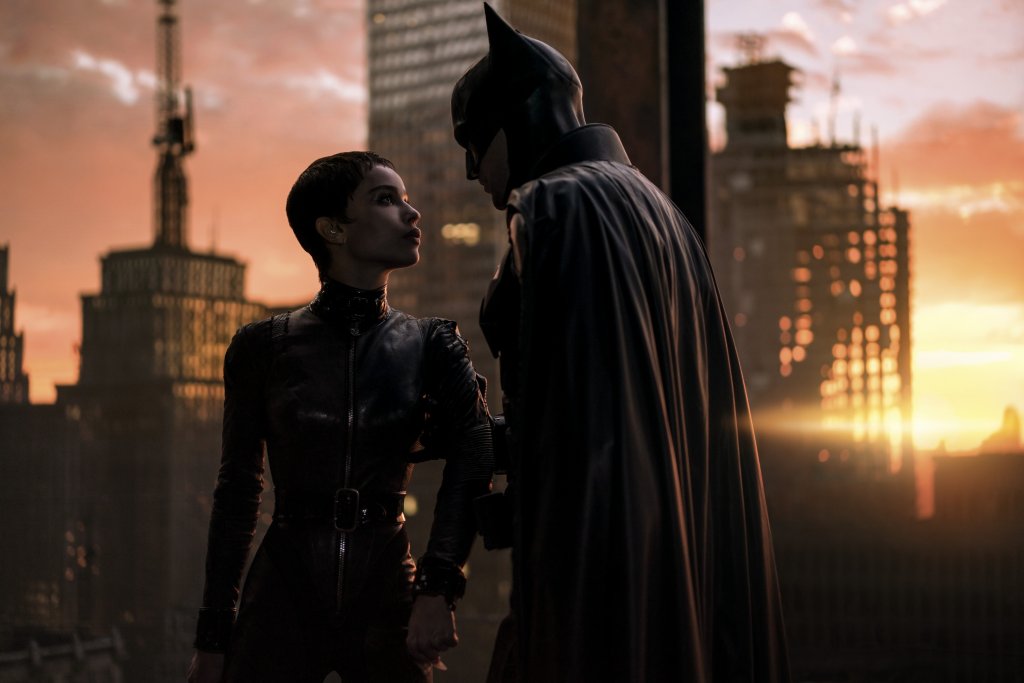
Can you elaborate on what it was like to use VR technology in the making of the film?
On The Lion King, which is the film that I did before this, I had the incredible opportunity to work with Jon Favreau and his team. His goal was to basically create a film that felt entirely live-action. So in order to do that, we built the world of The Lion King in the computer. So this was the first film that had ever been shot entirely in VR. And so for me, it was sort of a two-year university course in VR tech. We had always been designing in the computer, but this was the first time that I had actually gone into the space, and experienced it like that. So I was very excited, coming off of that project, to bring those tools to Matt and show him what was possible. We designed the entire world of Gotham in the computer and he was basically able to walk into the spaces in VR. We had the entire camera system, and all of the lenses set up and he would work with animators and previs artists setting figures, running action sequences, and then running cameras. Basically, he was able to storyboard and shot list the whole film before we had built anything. So it was just an amazing tool for all of us in terms of being more efficient about what we build and also helping him get a real sense of what he was going to encounter on set.
On top of this, you also brought in StageCraft technology, which obviously went down extremely well on The Mandalorian. How fun was that technology to work with, and what do you think it brought to the movie?
Greig Fraser is an absolute master first of all on many levels. He had learnt so much on The Mandalorian, breaking those tools, and figuring out those systems, similar to my experience on The Lion King I think Greig was really excited to bring those tools over to The Batman and share those with Matt and the team. Obviously, it creates incredible opportunities for you. Long sequences at dawn and dusk, then also just the beauty of the light that you can generate from those films. We knew that we wanted it to be super low light, right on the edge of falling into inky blackness, I think Greig was really excited about the opportunities that that tech afforded him for like a realistic look. Which was in sync with our overall plan for the sets. Lighting as much as possible with practicals, really letting the light come from the set itself. It was a really tight integration between our departments to capture that.
We spoke to The Twins [Max & Charlie Carver] recently, so to sort of tie these interviews together, I wanted to discuss The Iceberg Lounge set with you? What were the main influences behind it, and how did you really want it to come across in the film?
As a young person, I spent a tremendous amount of time in nightclubs in New York. So I was excited about being able to represent that in a way that felt again grounded and real, and something familiar to me. So it was an amazing opportunity. It was also an incredible collision of narrative threads that were coming together. We had the Riddler’s perspective, Falcone’s, 44 Below, we had the club itself, the street outside with the diner. So there are a lot of threads that needed to come together spatially, as well as narratively. In terms of influences, I think I had been to a party at the Brooklyn Bridge Anchorage at one point, and was just blown away by that space, but also I was inspired by a story about Robert Moses, who was the architect of the freeway system in New York City, and he was this kind of nefarious character who had like destroyed all of these neighbourhoods by building expressways through them, and the legend is that his office was underneath the toll plaza of the Triborough Bridge, and there was a tube that ran from the tolls through his office, and all of the cash that came in the tolls was flowing through his office into a vault below, that he used to pay for his own security team. It was just an amazing idea for a bad guy lair that I had held onto. There’s a moment in the script where the lights go out in Falcone’s place, and I was excited about the idea that the lights from the roadway would be lighting up that fight scene. It was a really pivotal piece of geography in the film, and it allowed us to create this beautiful anchor, which was the Tricorner Bridge, that is the centre of that set.
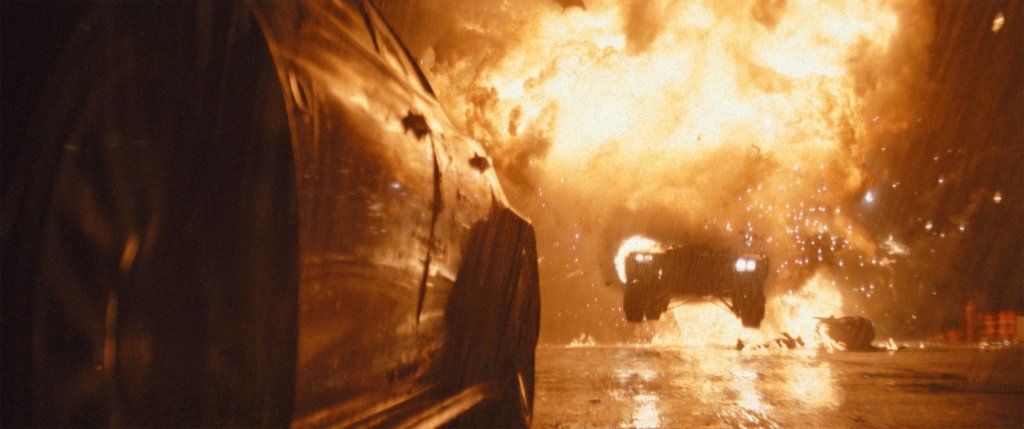
For me personally, I got a Mad Max-style feel from this version of the Batmobile, would you say that’s fair, and also, can you tell us how the look for this version of the Batmobile came together?
First of all, I have maximum respect for Mad Max and all vehicles from those films. I just think it’s amazing how many ideas those filmmakers can pack into all of their props and vehicles, it’s just unbelievable. But I’m actually hopeful that ours is a bit more refined than Mad Max. I’d say for us, the comparison that I will cop to, and what I love about Mad Max is those are entirely bespoke vehicles, and each person’s car reflects their character, they’re making choices in terms of what they need out of the car, they may strip it down to make it lighter, or add extra armament, depending on what they’re trying to do. And that’s certainly the way we approached the design of the Batmobile, we wanted to create a car that was mission-specific, so everything on the car is related to some need that Batman has. It’s not there for design, it’s there for a purpose, and I also think that there is something about the toughness of a Mad Max car, and the toughness of our car. Basically, the main sort of superpower of the Batmobile is that it can charge through anything. It’s got this massive steel bumper and steel frame that runs through it, and obviously, you see in the chase sequence that they really take advantage of that superpower. So yeah, those would be the comparisons that I do see.
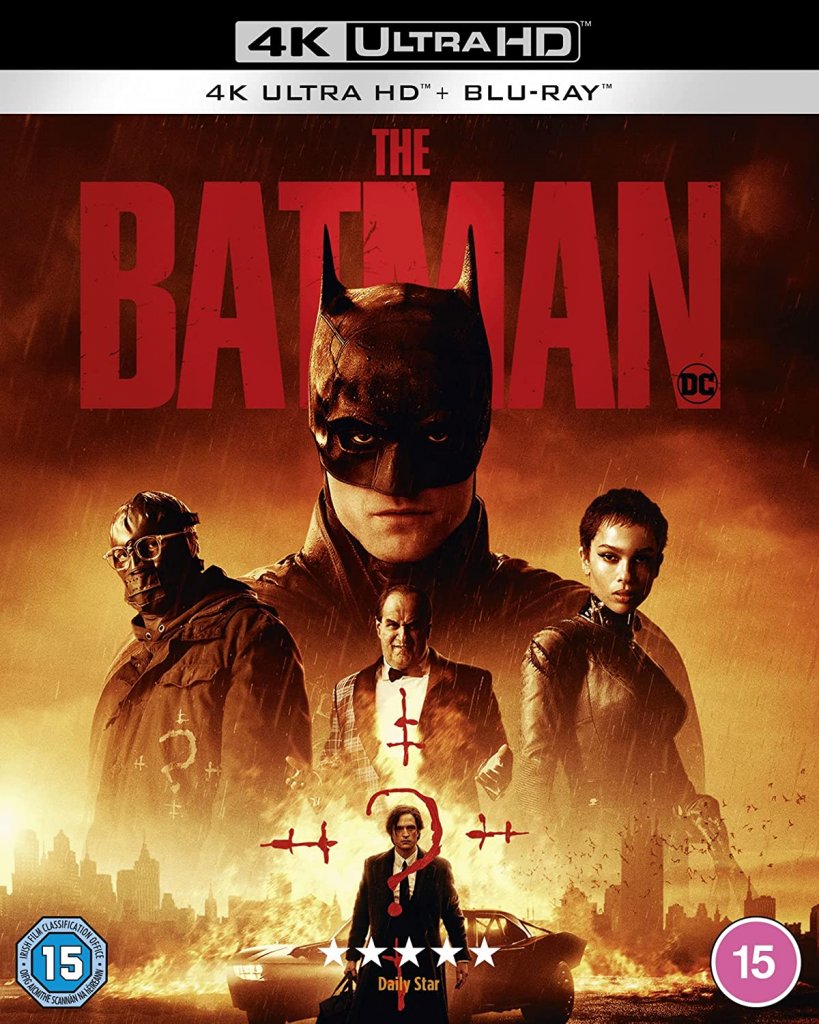
What was the most rewarding set for you to work on within The Batman, and why?
I think Wayne Tower for me was one of the most exciting spaces. It allowed us to really expand on Bruce’s character through some of those choices, I think we are really trying to reflect him as an urban Batman as opposed to a suburban Batman. It always bugged me that Batman would come into the city and fight crime, and then go back to his mansion in the country, to sort of recover. I really loved the idea of anchoring him in the heart of the city, and so Wayne Tower allowed us to do that. It was also just an incredible playground for us to be able to explore different versions of Gothic ornament, and really create this overall feel for his backstory, and then obviously the connectivity with the Batcave below. The idea that it was this old private train station that the Wayne’s had built way back when, and it had sort of been lost in time. It allowed us to create a world that felt plausible, and grounded, and at the same time it elevated the fantasy of Batman, and all the kinds of dreams we have as kids when we think about what his life might be like, and so I hope we ticked all of those boxes.
THE BATMAN is available to own on Digital Download right now and 4K UHD, Blu-ray, and DVD from June 13th.

